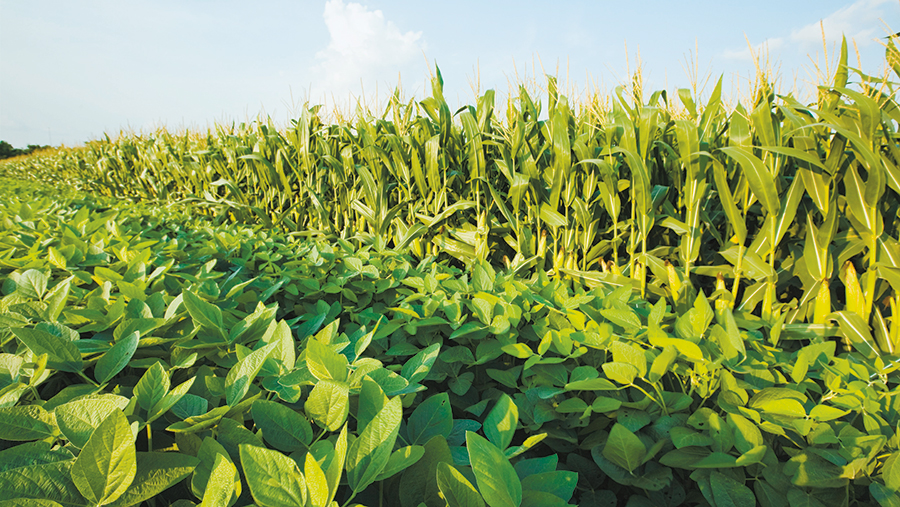Global Grain Insight: Markets will be driven by weather regardless of Brexit
 © Design Pics Inc/Rex/Shutterstock
© Design Pics Inc/Rex/Shutterstock Despite UK political volatility, prospects for grain prices over harvest will be driven by global supply-and-demand dynamics, says Nidera UK trading director Stuart Shiells.
While the long-term impact of Brexit on UK agriculture weighs heavily on the minds of many industry commentators, when it comes to grain and the prospects for prices in the near future, supply, demand, stocks and weather will still determine the market.
Certainly, the weaker pound has helped UK grain prices from falling as hard as other markets and has produced some much-needed pre-harvest sales in recent weeks.
See also: Cereals 2016 – advice on surviving the arable cashflow crisis
But it’s the state of global corn and soya bean crops that hold the real balance of power now.
This was demonstrated during June, when markets rallied on the back of South American production concerns for soya beans in Argentina and Brazilian Safrina corn, after adverse weather in both regions.
Safrina is Brazil’s second corn crop, planted in January after early soya bean crops have been harvested. It is mainly destined for export markets and accounts for just over half the country’s corn production.
Corn and soya bean
More recently, attention has switched to the US, where “La Nina” weather patterns could cause above-average temperatures to build through late summer, with the potential to affect corn and soya bean production.
Traders have been watching forward forecasts for any signs of extreme heat developing. But so far, “La Nina” has not been as strong as initially feared and US weather has been relatively benign for developing crops.

Stuart Shiells is trading director at Nidera UK
The pivotal 30 June US Department of Agriculture (USDA) report caused a shock, however, with a larger-than-expected area of corn and higher stocks of old crop.
These factors, combined with the weaker “La Nina”, caused Chicago corn futures to fall rapidly, taking wheat along with them.
In contrast, for soya beans the USDA report had a positive initial influence on prices.
Although there was an increase in acreage, it was below that expected and with potential for excess heat during pollination still to come, the market moved sharply higher.
However, these gains were quickly eroded, with forecasts of soaking rains in the soya bean belt.
Part of the reason for soya beans and corn being the centre of attention is that the time when weather could affect 2016’s strong global wheat production has largely passed, making sustained pressure on values in the short term almost inevitable.
Wheat
Without a major weather concern for corn or soya beans to drag wheat higher, a meaningful rally in prices for UK producers is largely off the cards.
At the time of writing (12 July), November feed wheat prices ranged from £115/t to £122/t ex-farm, with the higher end of the range in the north and north-east.
Harvest weather is looking good across most of Europe, Russia could produce one of its biggest wheat crops in recent times, Canada’s crop size continues to increase and Australia’s crop is off to a great start, with good prospects for rain as the growing season continues.
While the quantity of wheat to be produced in 2016 looks high, quality is a different issue – with low proteins a problem in the US, Russia, Ukraine and France.
If the UK has a good-quality crop and the pound remains weak, we could see useful export opportunities resulting – particularly to areas such as North Africa.
That said, global demand has its problems. Egypt has been inactive recently in terms of importing grain, following ergot disputes, and the Indian government’s decision to extend duty upset the market and subsequent import interest is slow.
Indonesian government restrictions on feed wheat imports will slow demand for the balance of the year as well.
Effect on the UK
Despite the effects of the weaker pound, it is likely the real opportunity for higher prices in the UK has passed for the moment, as sentiment around soya bean and corn supply settles down.
Until the referendum result, very little new crop export business had been written, as the UK had been simply too expensive to compete – and we still face significant competition for business into traditional export homes.
In addition, lower global grain quality means more feed wheat competing with UK exports, although higher-quality UK grain could present opportunities in markets traditionally dominated by countries such as France.
The current volatility in sterling could also provide the UK with some good export opportunities in the short to mid term.
Globally, the supply situation for wheat and corn is strong, but with tight US soya bean supply and demand, any weather problems could still cause volatility. Any rallies should still be viewed as selling opportunities – particularly in wheat.
Grain market drivers
A summary of the current main price factors and their probable influence

Red: Factors putting downward pressure on prices – accounts for 25% of current market influence
No wheat story to cause an upturn in the market as stocks and supplies remain strong, with weather unlikely to affect global production significantly. Recent favourable US weather is also reducing the chance of wheat prices receiving a helping hand from corn.
Amber: Watch this space – 60%
The weather phenomenon “La Nina” could still have some tricks up its sleeves. Although it has had little affect on US crop development so far, its potential to cause drought later in the summer – and the effect this will have on soya bean production, in particular – needs monitoring.
Green: Factors exerting upward pressure on prices – 15%
Sterling’s weakness is making UK grain more competitive than in recent years, with significant export opportunities a possibility. The UK harvest looks promising quality-wise, compared with many other countries.
Nidera UK is part of global grain trader Nidera, which operates in 22 countries. One of the UK’s key grain exporters, it is based at Ipswich, Suffolk, with regional offices in Yorkshire, Norfolk, Liverpool and Shropshire.
